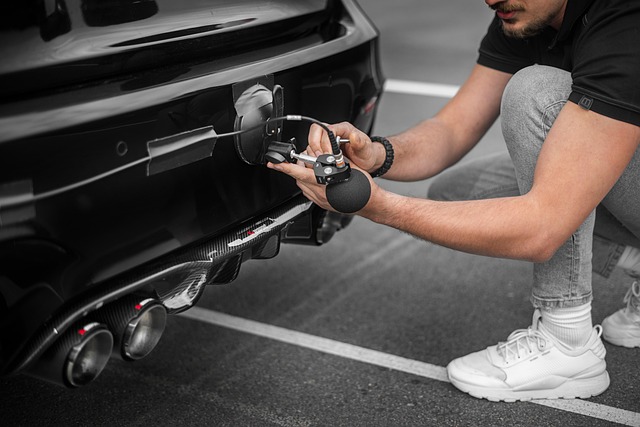Looking to register your car in California? This comprehensive guide walks you through the entire process, from understanding essential requirements to securing your license plate. We break down each step, including gathering crucial documents for VIN verification—a critical part of the registration process. Learn how to perform a Vehicle Identification Number (VIN) check and complete the application smoothly. Get ready to hit the road legally!
- Understand the Requirements for Car Registration in California
- Gather Necessary Documents for VIN Verification
- Perform a Vehicle Identification Number (VIN) Check
- Complete the Registration Application Process
- Pay Registration Fees and Receive Your License Plate
Understand the Requirements for Car Registration in California

Before you can register your car in California, it’s important to understand the state’s specific requirements. One crucial step is ensuring your vehicle has a valid Vehicle Identification Number (VIN) and undergoing a VIN verification process. This involves checking that the VIN on the vehicle matches the one provided by the manufacturer. In California, this verification is typically done through an official California Department of Motor Vehicles (DMV) inspection or by utilizing a trusted mobile vin inspection service.
Additionally, you’ll need to gather essential documents, such as proof of ownership and insurance, along with any applicable fees. A mobile vin verifier can be particularly helpful in streamlining this process, especially if you’re busy or have limited mobility. They offer convenient VIN inspections that ensure your car meets California’s registration standards before submitting your application at the DMV.
Gather Necessary Documents for VIN Verification

Before you start the registration process, ensure you have all the required documents for VIN (Vehicle Identification Number) verification. This step is crucial as it helps to establish the vehicle’s history and authenticity. Gather important paperwork such as the title or bill of sale, which was issued when you purchased the car. Additionally, your driver’s license, proof of insurance, and a valid registration from the previous state (if applicable) are essential for the process.
For a smoother experience, consider using a mobile VIN verifier to obtain a digital report of your vehicle’s history. This modern approach allows you to quickly verify the VIN without the hassle of visiting a DMV office. It provides detailed information, including accident reports, ownership history, and potential issues, empowering you with knowledge before finalizing the registration in California.
Perform a Vehicle Identification Number (VIN) Check

Before registering your car in California, it’s crucial to perform a Vehicle Identification Number (VIN) check. This process verifies that the vehicle is as described and has no outstanding issues or hidden history. You can conduct a VIN inspection through various online services or by visiting a local car dealership or auto repair shop. They will use specialized tools to cross-reference your vehicle’s unique VIN number with databases, ensuring its authenticity and condition.
A mobile VIN verification service is another convenient option in California. These services send a specialist to your location, whether it’s your home or workplace, to perform the vin inspection on-site. This method saves time and effort, especially for those who have busy schedules. By combining advanced technology with expert knowledge, these professionals can provide accurate results, giving you peace of mind when registering your vehicle.
Complete the Registration Application Process

To complete the registration application process for your car in California, gather all necessary documents and prepare to verify your vehicle’s identity through a crucial step known as VIN verification. Start by obtaining the Vehicle Identification Number (VIN) from your vehicle, which is typically located on the vehicle’s certificate of origin or on the driver-side dashboard. For added convenience, consider using mobile VIN verification services that allow you to complete this inspection remotely.
Next, fill out the registration application form, providing detailed information about your car, including its make, model, year, and color. Ensure your details match the vehicle’s documentation precisely. After submitting the form, a California Department of Motor Vehicles (DMV) representative will conduct a thorough check, verifying both the vehicle’s identity and your eligibility to register. Should you opt for a mobile VIN inspection, this process becomes even smoother, allowing for a quicker connection with the DMV and faster registration completion.
Pay Registration Fees and Receive Your License Plate

After completing your vehicle’s registration application, it’s time to settle the fees. The cost of registering a car in California varies based on several factors including the type and age of your vehicle. You’ll need to pay the base registration fee, as well as any additional charges for emissions testing or special plates. You can typically do this at a local DMV office or online through the official DMV website.
Once your payment is processed, you’ll receive your license plate. In California, these plates are usually assigned based on vehicle type and available slots. For vehicles requiring a vin inspection, like those over 10 years old or certain models, you may opt for a mobile vin verification or visit a designated inspection station to have it done – ensuring the accuracy of your vehicle’s identification number (VIN) is crucial in the registration process.
Registering a car in California involves understanding specific requirements, gathering essential documents for VIN verification, completing an application process, and paying associated fees. By diligently navigating these steps, you’ll ensure your vehicle is legally registered and ready to hit the bustling California roads. Remember, proper documentation and accurate information are key during each stage of the registration process.
